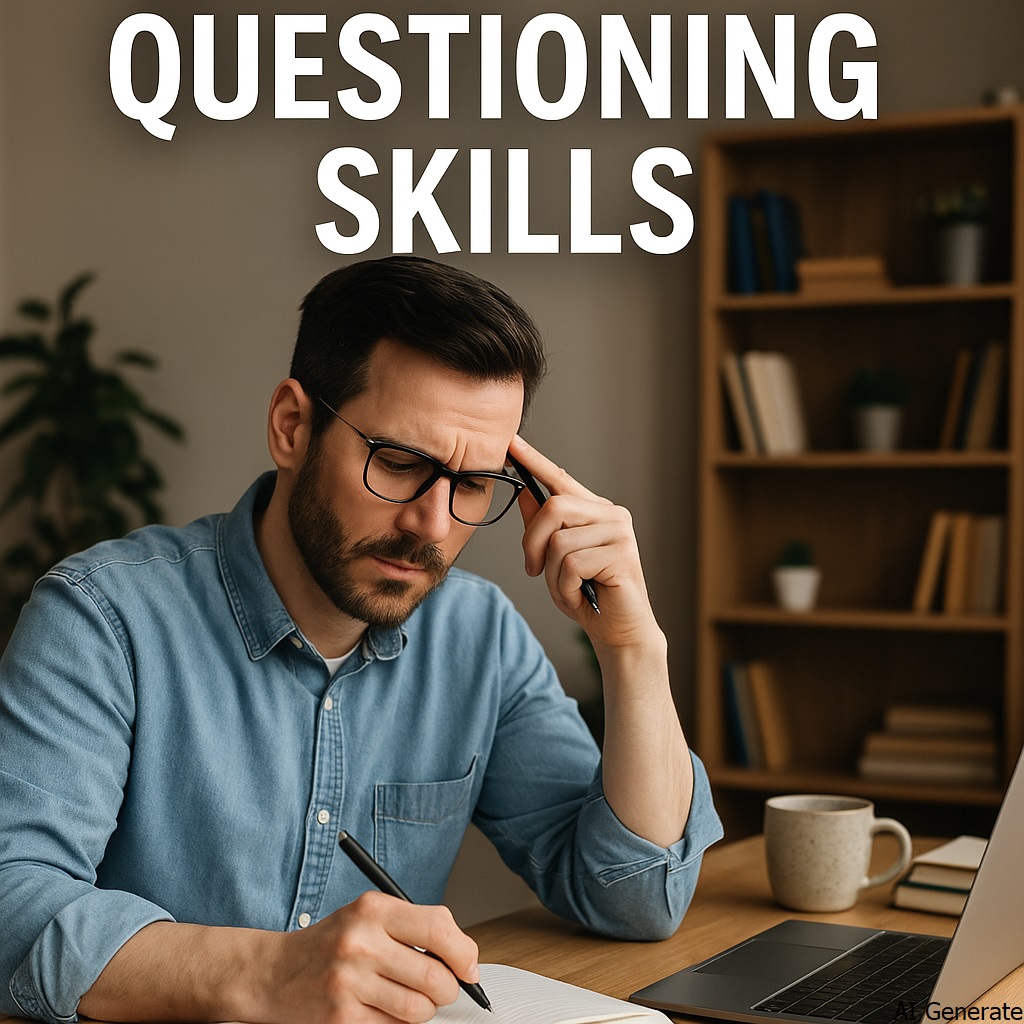
Why don’t students ask more questions in class? It’s not because they lack curiosity. Most often, it’s because they haven’t been shown how to form and express meaningful questions.
Many education systems still emphasize answering questions over asking them. Yet, students who know how to question become better thinkers, learners, and problem-solvers. Developing this skill goes beyond academics. It shapes how students think about the world and interact with new information.
Let’s explore how questioning skills can be cultivated with simple, practical strategies that are already making a difference in classrooms around the world.
What Are Questioning Skills?
Questioning skills involve the ability to generate thoughtful, relevant, and purposeful questions. They include:
-
Knowing when and how to ask
-
Using open-ended and clarifying formats
-
Framing questions based on purpose
-
Engaging critically and reflectively
These skills help students move from passive listening to active learning.
Why Students Need to Learn How to Question
Questioning deepens understanding, encourages independence, and builds confidence. According to Harvard Project Zero, students who question are more engaged and retain more information. They learn to:
-
Challenge assumptions
-
Clarify concepts
-
Explore different viewpoints
-
Reflect on their own thinking
In a study by Chin & Osborne (2008), classrooms that encouraged student questions saw a measurable improvement in critical thinking and comprehension.

What Prevents Students from Asking Questions?
There are several reasons students may hold back:
-
Fear of being wrong or judged
-
Lack of confidence
-
Limited exposure to open dialogue
-
A classroom culture focused only on correct answers
-
Fast-paced instruction without space for reflection
UNESCO’s 2020 report noted that over half of students globally feel their input isn’t encouraged in class.
The Role of Teachers in Encouraging Questions
Teachers have a major influence. By modeling curiosity, they show that questions are welcome. Here are a few teacher-led strategies:
-
Ask open-ended questions out loud
-
Use wait time before calling on students
-
Acknowledge all questions respectfully
-
Provide sentence starters for unsure students
Robert Marzano (2003) notes that the way a teacher handles questions often shapes how students approach learning.
How to Build a Question-Friendly Environment
A supportive classroom makes students feel safe to speak up. Try these:
-
Make mistakes acceptable
-
Celebrate thoughtful questions
-
Create routines that include daily questioning
-
Use group work to lower the pressure of public speaking
Small shifts in tone and encouragement make a big difference.
Classroom Practices That Improve Questioning Skills
Use Think-Pair-Share
Students think individually, discuss with a peer, and then share. It reduces fear and allows ideas to evolve.
Question Journals
After each lesson, ask students to write down at least one question. Review them weekly to track growth.
Exit Questions
Instead of quizzes, have students answer: "What’s one question you’d still like to ask about today’s topic?"
Question of the Day Boards
Dedicate a wall or digital board for students to anonymously post questions.
Teaching With Questioning Frameworks
Bloom’s Taxonomy
This tool helps students understand different levels of questioning:
-
Remember: What is...?
-
Understand: Why does...?
-
Apply: How would you use...?
-
Analyze: What’s the difference between...?
-
Evaluate: Do you agree with...?
-
Create: Can you design a...?
Q-Matrix
Created by Spencer Kagan, the Q-Matrix guides students in building increasingly complex questions by combining prompts such as "who/what/why" with "past/present/future."
Encouraging Shy or Reluctant Students
Not every student is comfortable speaking up. Strategies that help include:
-
Letting them submit questions anonymously
-
Using digital tools like Padlet or Jamboard
-
Encouraging small group discussion first
-
Providing personal feedback and encouragement
Students who feel supported eventually become more vocal and confident.
Inquiry-Based Learning in Practice
In inquiry-based classrooms, teachers pose questions instead of delivering facts. For example:
Instead of explaining the food chain, a teacher might ask: "What would happen if all insects disappeared?" Students explore, research, and collaborate on projects. This process improves curiosity, understanding, and retention.
The OECD (2021) reported that students in inquiry-driven classrooms scored higher in science literacy across 38 countries.
Socratic and Dialogic Methods
Using Socratic questioning, teachers challenge students to explain their reasoning:
-
"What makes you say that?"
-
"Can you give an example?"
-
"What else might be true?"
Dialogic teaching, where the lesson is a two-way exchange, improves reasoning and empathy.
Real-World Examples
Finland
Schools enable students to develop their own research questions and investigate their answers. This has increased engagement, self-confidence, and deeper learning.
Nepal (Dang District)
One public school asked students to interview their grandparents about local history. They came back with questions that shaped community-based learning units.
Using Digital Tools to Support Questioning
Technology makes it easier for students to ask without pressure:
-
Mentimeter for anonymous questions during lectures
-
Flipgrid for video-based inquiries
-
Google Forms for question journals
Digital platforms open up space for all voices to be heard.
Linking Questioning With Assessment
Try:
-
Student-created quizzes
-
Reflection essays on what they still wonder about
-
Group presentations starting with their own key question
These methods assess understanding and curiosity.
How to Measure Growth in Questioning
It can be tracked in simple ways:
-
Count the number and type of questions per student each month
-
Review the question journals
-
Ask students to assess their own progress
-
Include peer feedback during group work
Question quality improves over time with consistent support.
Common Challenges to Watch For
-
Treating questions as interruptions
-
Ignoring repetitive or "simple" ones
-
Focusing only on correct answers
-
Rushing through student responses
Every question matters. Even small ones lead to larger insights.
Conclusion
Teaching students to ask good questions takes time, patience, and care. But it’s worth it.
When students are encouraged to wonder, explore, and challenge what they hear, they don’t just learn content. They learn how to think for themselves.
Whether you're a teacher, parent, or school leader, helping young people build questioning skills is one of the most meaningful things you can do. It begins with a simple shift: from giving all the answers to making room for questions.
FAQs
1. How can I support students who are hesitant to ask questions?
Use anonymous tools, small group discussions, and private encouragement. Give them sentence starters to build confidence.
2. What makes a good question in class?
A good question is clear, open-ended, and encourages deeper thinking or further discussion.
3. Should I correct every question if it’s based on a wrong idea?
Not always. Use it as a chance to guide the student to rethink, rather than just correct them.
4. How early should we start teaching questioning?
Preschool. Children naturally ask "why." Build on that through storytelling, visuals, and guided inquiry.
5. Can questioning be taught in every subject?
Yes. Whether it's math, science, or art, asking good questions enhances understanding in all areas.


